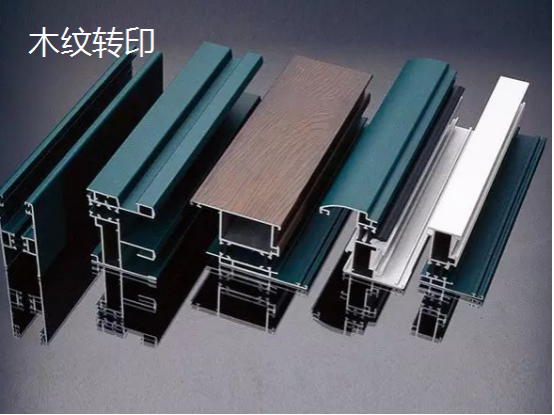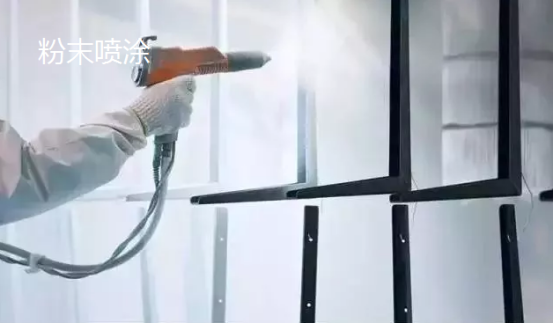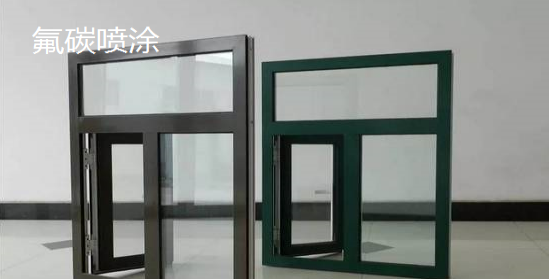

With its fashionable and beautiful appearance, aluminum alloy doors and windows are more and more popular with consumers for their advantages of energy saving, environmental protection and safety. Its smooth surface, beautiful color and clear and lifelike texture make people wonder what technology can create such a high-end surface. Here's to you.
Generally, there are three kinds of surface treatment methods for doors and windows, which are wood grain transfer printing, powder spraying and fluorocarbon spraying.

Wood grain transfer printing:
Wood grain transfer printing is based on powder spraying or electrophoretic painting, according to the principle of high-temperature sublimation heat penetration, through heating and pressure, the wood grain patterns on transfer paper or transfer film can be quickly transferred and penetrated to the profiles that have been sprayed or electrophoretic. Wood grain surface of door and window profiles, usually using wood grain heat transfer printing method for surface treatment.
Because the wood grain transfer products in the appearance of aesthetic feeling, material strength, cost performance, service life, application range and other aspects are very outstanding, and the engineering installation is very simple. Wood grain transfer printing technology is widely used in aluminum alloy doors and windows, anti-theft doors, fire doors, steel wood furniture, filing cabinets, computer shells, household appliances, metal accessories and other high-temperature metal materials.

Powder spraying:
Powder spraying is to use the principle of electrostatic spraying to adsorb the dry powder on the metal aluminum profile. After being roasted at high temperature above 200 ℃, the powder is solidified into a strong and bright coating with thickness of about 60 microns. The surface coating of the aluminum alloy can not fade, discolor and crack within 5-10 years. Its weather resistance and corrosion resistance are better than that of ordinary aluminum, and the color is diversified.

Fluorocarbon spraying:
Fluorocarbon spraying is due to the introduction of fluorocarbon into the resin coating, which has high electronegativity and strong bond energy (carbon fluorine bond), which makes fluorocarbon resin have special superior characteristics. Fluorocarbon paint spraying is a kind of electrostatic spraying and also a liquid spraying method. PTFE, PVDF, FEVE and PVF are common.
Fluorocarbon spraying has excellent anti fading, frost resistance, corrosion resistance to air pollution (acid rain, etc.), strong UV resistance, crack resistance and can withstand adverse weather environment, which is beyond the common coating. These excellent characteristics make fluorocarbon resin widely used in the construction field.
The above is the full description of the three surface treatment methods. Each of the three technologies has its own advantages. You can choose according to your needs.